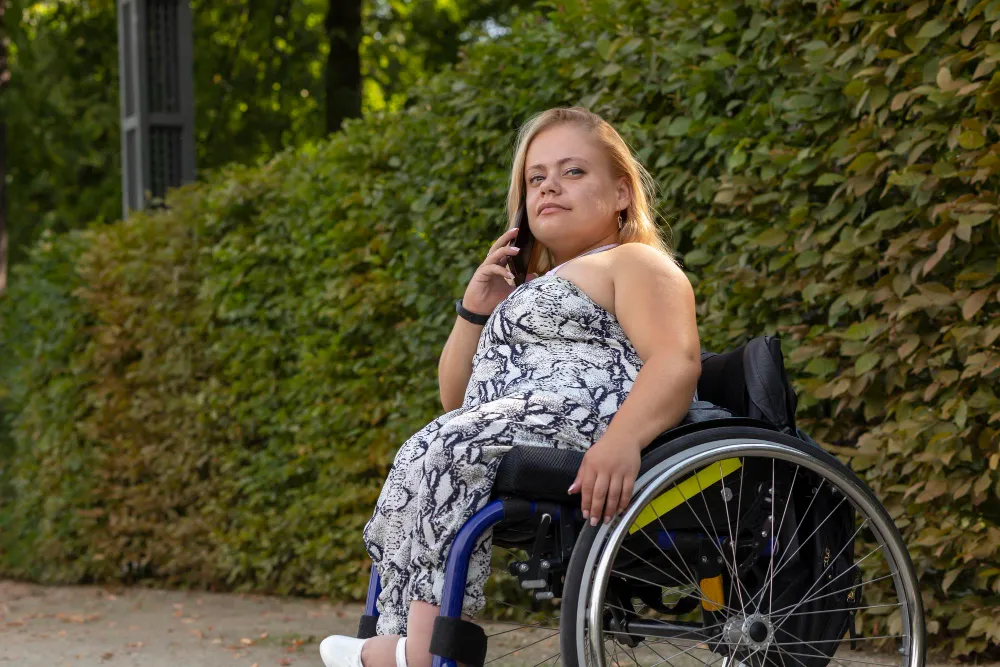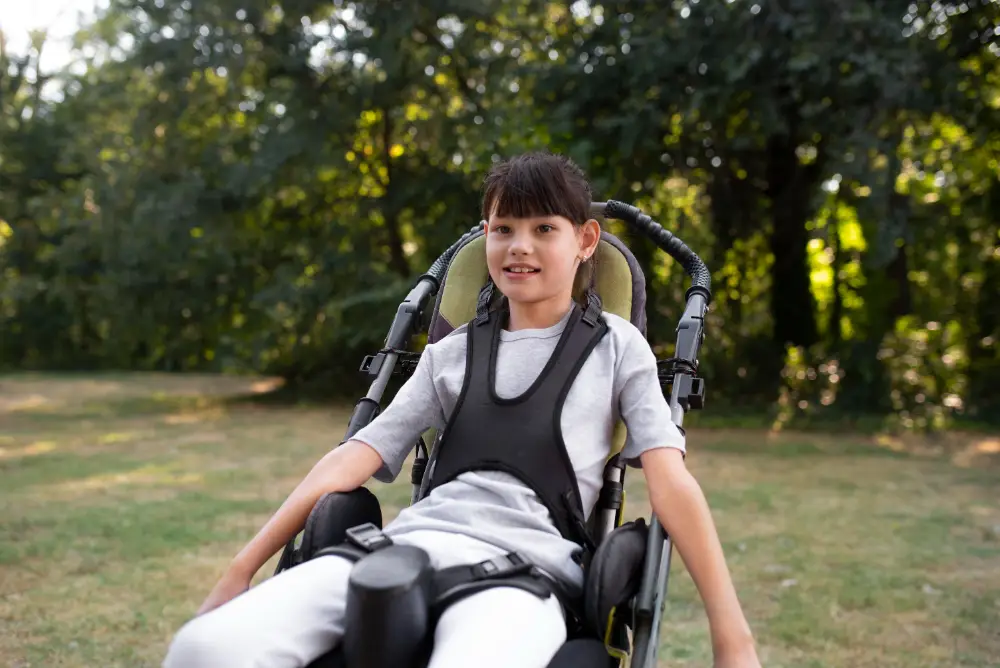Discover NDIS funding for cerebral palsy and how it can support individuals with this condition.

Cerebral palsy is a prevalent condition in Australia, affecting thousands of children and adults, including those in Sydney. It is a complex disability, with individuals experiencing a wide range of challenges and needs. For people living with cerebral palsy in Australia, the NDIS acts as a vital lifeline. This government initiative, alongside other government services, provides funding for support services that aim to improve quality of life and enable greater participation in the community.
Navigating life with cerebral palsy can be demanding, requiring tailored assistance to address individual needs. This is where the NDIS steps in, working to ensure that Australians with cerebral palsy have access to the essential resources they need to thrive. Through a collaborative approach between individuals, families, and support networks, the NDIS aims to empower individuals with cerebral palsy to live fulfilling and meaningful lives.
To be eligible for NDIS funding, individuals with cerebral palsy must meet specific disability requirements within the category of NDIS eligibility, which includes those categorized under List B. The NDIS follows a set of guidelines to determine eligibility based on the severity and impact of the disability. The assessment considers factors such as the level of impairment, the need for assistance with daily living activities, and the impact of cerebral palsy on participation in education, employment, and social life.
One of the key factors considered is how cerebral palsy affects an individual's functional capacity. The NDIS uses assessments, such as the Gross Motor Function Classification System (GMFCS), to determine the level of support needed. This system categorizes the severity of motor impairments, guiding the allocation of appropriate resources. Additionally, the NDIS takes into account the impact of cerebral palsy on an individual's overall well-being and ability to engage in a meaningful way with the community.
Meeting these disability requirements ensures that NDIS funding is directed to those with significant and permanent disabilities, allowing for comprehensive support tailored to their individual needs. The NDIS emphasizes a person-centered approach, ensuring that the support provided aligns with the individual's goals and aspirations.

The NDIS offers a comprehensive range of support services specifically tailored for individuals with cerebral palsy, including speech therapy and physiotherapy. These services are designed to address the diverse needs of NDIS participants, encompassing various aspects of daily living and personal development.
From therapeutic interventions, including occupational therapy, to assistive technology, the NDIS funding aims to promote independence, enhance fine motor skills and other skills, and facilitate greater participation in all aspects of life. The goal is to empower individuals with cerebral palsy to live fulfilling and meaningful lives.
Individuals with cerebral palsy often require assistance with personal care tasks, and the NDIS recognizes this need by funding a range of support services. These services are designed to assist NDIS participants in maintaining their personal hygiene, managing their daily routines, and engaging in everyday activities with greater ease.
Personal care support can encompass a variety of tasks, including assistance with bathing, dressing, grooming, and toileting. It also extends to support with meal preparation, medication management, and mobility assistance. The NDIS aims to provide funding for these services to ensure that individuals with cerebral palsy can maintain their dignity and independence while receiving the necessary support to manage their daily lives effectively.
By providing funding for personal care support, the NDIS acknowledges the importance of individual well-being and the need for tailored assistance from carers to facilitate greater independence for people living with cerebral palsy. This support plays a crucial role in enabling individuals to participate more fully in their communities and strive towards achieving their personal goals.
The NDIS recognizes the vital role of assistive technology in enhancing the lives of people with cerebral palsy. Through the disability insurance scheme, individuals can access funding for a wide range of equipment and technology aids designed to promote independence, mobility, and communication.
These assistive technologies can include mobility aids such as wheelchairs, walkers, and orthotics, enabling individuals to move around their environments with greater ease and safety. Communication devices, such as speech-generating devices and augmentative and alternative communication (AAC) systems, are also covered, empowering individuals with communication impairments to express themselves effectively.
Furthermore, the NDIS funding can be used to acquire adaptive equipment for daily living, making tasks such as eating, dressing, and personal care more manageable. By providing access to these essential tools, the NDIS empowers individuals with cerebral palsy to overcome barriers, participate actively in their communities, and live life to the fullest potential.
Applying for NDIS funding can seem daunting, but understanding the steps involved simplifies the process. A clear roadmap guides individuals and families through gathering necessary documentation, undergoing assessments, and receiving an NDIS plan tailored to their needs.
This plan outlines approved supports and funding, enabling individuals with cerebral palsy to access life-changing services. By breaking down the application process into manageable steps, potential applicants can approach it with greater confidence and clarity.
The first step in the application process is to determine your eligibility for NDIS. You can do this by visiting the NDIS website or contacting the NDIS directly. Once your eligibility is confirmed, you can begin the application process.
This involves completing an access request form, which gathers information about your disability, support needs, and goals. Supporting documentation, such as medical reports and assessments, will be required to substantiate your application. Upon submitting your access request, the NDIS will review your application and supporting documents.
If your application is successful, you will be invited to participate in a planning meeting. During this meeting, you will collaborate with an NDIS planner to develop your personalized NDIS plan. This plan outlines the type and level of support you will receive and guides you on how to utilize your NDIS funding effectively.
To support your NDIS application for cerebral palsy, gathering comprehensive documentation is crucial. This documentation provides evidence of your disability, its impact on your daily life, and the need for ongoing support. Medical reports from specialists, therapists, and other healthcare professionals are vital to demonstrate the diagnosis, severity, and functional limitations associated with cerebral palsy.
Assessments conducted by qualified professionals, such as occupational therapists, physiotherapists, and speech therapists, are particularly valuable for capacity building. These assessments provide insights into the individual's needs, strengths, and areas where support is required. A detailed history of interventions, therapies, and assistive technologies trialed or currently in use helps the NDIS gain a holistic understanding of the individual's journey.
By providing these documents, individuals applying for NDIS funding with cerebral palsy strengthen their application and enable the NDIS to develop a comprehensive and tailored NDIS plan that addresses their unique needs and goals.

Receiving your NDIS plan marks an important milestone, opening doors to a wide range of support services. It's essential to understand how to utilize the allocated funds effectively to maximize their impact on your overall well-being. Seeking guidance from support coordinators or experienced individuals within the cerebral palsy community can provide valuable insights on making informed decisions.
By actively engaging in the management of your NDIS plan, you ensure that the provided support aligns with your evolving needs and aspirations. This proactive approach enables you to make the most of the available resources, fostering greater independence, and enhancing your overall quality of life.
Utilizing NDIS funding effectively is crucial for maximizing its impact on the individual's quality of life. To achieve this, a well-structured plan that aligns with the individual's goals is essential. Prioritizing essential support services, such as therapies, assistive technology, and personal care, should be the initial focus.
As the plan is implemented, regularly evaluating its effectiveness and identifying any areas for adjustment are vital. Open communication with support coordinators and service providers is key to ensuring that the allocated funds are utilized optimally and that the individual's evolving needs are met.
Moreover, exploring available resources beyond direct NDIS-funded services, such as community groups, support networks, and government initiatives, can further enhance the individual's overall well-being. Effective utilization of NDIS funding goes beyond simply accessing services; it's about creating a holistic support system that empowers individuals with cerebral palsy to live their lives to the fullest.
An NDIS Plan is not static; it's designed to evolve alongside your changing needs. Regularly reviewing your plan ensures it remains relevant and continues to support your goals. Life is full of transitions—you might change residences, start a new school or job, or experience shifts in your abilities. Each change can impact your support requirements.
NDIS plan reviews provide a dedicated opportunity to evaluate what's working well and what might need adjustment. Collaborate openly with your support coordinator or LAC to discuss any challenges, new aspirations, or desired changes to your current support system.
Remember, your NDIS plan is a living document—don't hesitate to initiate a review whenever necessary. Staying proactive in managing and adapting your plan guarantees you receive the most appropriate and beneficial support for your journey with cerebral palsy.
In conclusion, understanding NDIS funding for cerebral palsy and CP is crucial for accessing the necessary support and resources for individuals of all ages, including those younger than seven years of age. By exploring eligibility criteria, types of available support, and navigating the application process, individuals can maximize their NDIS plan effectively. It's important to review and adjust the plan as needed to ensure proper utilization of funds. Remember, specialized NDIS providers in Australia can offer tailored assistance for cerebral palsy and CP. If you have any questions or need guidance on NDIS funding, consult with experts in the field to make informed decisions.
What is the first step to take when applying for NDIS with cerebral palsy?
The crucial first step is confirming your eligibility for NDIS. You can verify this on the NDIS website or by reaching out to the NDIS directly. This step clarifies your eligibility before proceeding with the application.
How does NDIS support children and adults differently?
NDIS support is tailored to an individual's age and stage in life. For children, it often focuses on early intervention and development, while for adults, it may emphasize independent living and community participation.
Can NDIS funding cover the full cost of cerebral palsy treatments?
NDIS funding for cerebral palsy treatments is determined on a case-by-case basis and depends on individual needs and what is deemed "reasonable and necessary" according to the NDIS.
How often can I review my NDIS plan?
You can review your NDIS plan as often as your needs change, and at a minimum, it's typically reviewed annually. The focus is on ensuring the plan remains aligned with your goals and circumstances.
Where can I find specialized NDIS providers for cerebral palsy in Australia?
To locate specialized NDIS providers, you can search the NDIS provider finder on the NDIS website, consult with your support coordinator, connect with cerebral palsy organizations in Australia for recommendations, or drop us an email for further assistance.